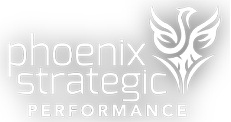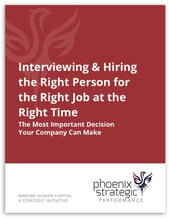Take Up the Job Description Challenge
Can a simple and often overlooked job description really safeguard your organization? They should if job descriptions are used to strategically align organizational goals and results with the employees' individual efforts. To achieve this alignment, you need to review the following Job Description Checklist to assess:
Job Description Checklist
- Are your current job descriptions as robust and strategically focused as they should be?
- Do you and your employees clearly understand their jobs and accountability at a detailed level?
- Does your organization have a robust and honest employee assessment process driven by the detailed job description? The assessment process should align with the job description and be used accordingly. If not, what are you assessing employees against?
- Is your organization committed to managing and monitoring the job description, assessment, and employee development process to ensure all efforts are aligned, optimal, and focused on strategic initiatives?
Job Descriptions - It's All in the Detail
It starts with a detailed, descriptive, and measurement-driven job description. Without that level of information, you don't have a job description but an ambiguous job outline. Let's be clear – a job outline is not a job description.
Gone are the days of writing one-size-fits-all, generic job descriptions. Accurate job descriptions describe the job in detail. Without the details, the generic job description is useless. How many times have employees said the following about their job descriptions?
"That may be my job description, but it has nothing to do with all the functions and tasks that are part of my job."
Who Should Develop and Use Job Descriptions?
The manager should develop job descriptions for hiring, assessment, and employee development, not for HR functions like job banding and compensation minimums and maximums. Unfortunately, this is what has happened to the generic job description. It has become an HR bureaucratic ritual rather than a human asset management strategy tool.
How Much Detail Should Be in Job Descriptions?
Let's review the purposes of a job description. It defines the job so the organization and the employee have a specific understanding of what the job and the employee are supposed to achieve. It is intended to provide clarity and transparency about the job and employee tasks to be done, accountability to be expected, and timelines and efficiencies to be attained. In today's matrixed organizations, the job description defines the functions and the people with whom the job interacts and the soft and hard skills necessary to do the job at a specified level. The manager and the employee drive the job description process. There can't be too much detail.
Human Asset Management Strategy© - Transparency, Clarity, Accountability and Results
Relevant and robust job descriptions take the mystery out of performance and employee development. Great job descriptions should be the basis for strategic alignment and should be used holistically as the basis for the following:
- Hiring and interviewing
- Onboarding methodically to accelerate performance
- Assessing performance
- Developing employees
- Planning for manpower capacity
Take the Job Description Challenge
Now is an excellent time to rethink how your organization uses job descriptions. As you move into the annual review process, which so many organizations conduct at the end of each year, consider how great job descriptions can help redefine your human asset management strategy for next year and the future.
We invite you to download our eBook: "Human Asset Management Strategy: A New Approach," which provides a multifunctional operational guide to human capital capacity planning. You can also schedule a complimentary assessment with a member of our team.





